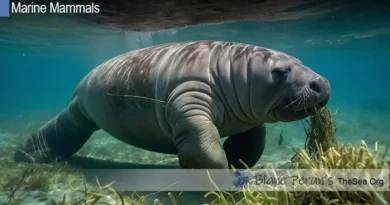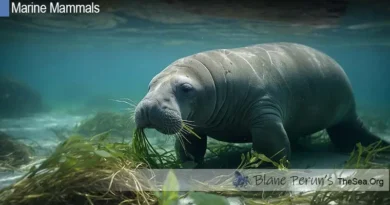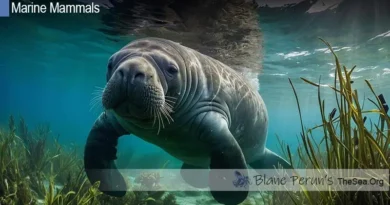Dugong Vs Manatee
Table of Contents
Dugong Vs Manatee: Unveiling the Gentle Giants of the Sea
When we talk about the gentle giants of the sea, the Dugong and the Manatee often come to mind. These serene sea creatures, often mistaken for one another, are the aquatic world’s peaceful grazers. Despite their similar appearances, they hail from different families and inhabit distinct regions of the world’s oceans and rivers. In this article, we’ll dive deep into the fascinating world of Dugongs and Manatees, comparing their habitats, physical characteristics, and behaviors, and uncovering the unique aspects that set them apart.
Habitat and Distribution
Dugong’s Domain
Dugongs, scientifically known as Dugong dugon, are primarily found in warm coastal waters from East Africa to Australia, including the Red Sea, Indian Ocean, and Pacific Ocean. These marine mammals prefer shallow, protected areas such as bays, mangrove channels, and the leeward sides of large islands where seagrass, their main food source, is abundant. Their distribution is closely tied to the presence of seagrass beds, making their habitat choice crucial for their survival.
Manatee’s Range
On the flip side, Manatees, belonging to the family Trichechidae, are divided into three species: the West Indian Manatee (Trichechus manatus), the Amazonian Manatee (Trichechus inunguis), and the African Manatee (Trichechus senegalensis). These gentle giants roam the warmer waters of the Atlantic Ocean, including the Caribbean, the Amazon Basin, and the west coast of Africa. Unlike Dugongs, Manatees can adapt to both saltwater and freshwater environments, often found in rivers, estuaries, and coastal marine areas.
Physical Characteristics and Adaptations
Dugong’s Distinct Tail
One of the most striking differences between Dugongs and Manatees is their tail. Dugongs boast a fluked tail, similar to that of a whale, which is a unique adaptation for their marine lifestyle. This fluked tail aids in powerful propulsion through the water, making Dugongs agile swimmers in their seagrass-rich habitats.
Manatee’s Rounded Paddle
In contrast, Manatees have a large, rounded, paddle-like tail that helps them maneuver through both the shallow waters of coastal regions and the deeper channels of rivers. This tail, combined with their strong, yet flexible, flippers, allows Manatees to gracefully navigate their environments, whether they’re grazing on underwater vegetation or coming up for air.
Diet and Feeding Habits
Dugong’s Seagrass Diet
Dugongs are often referred to as “sea cows” due to their herbivorous diet, consisting almost exclusively of seagrass. They use their bristled, sensitive snouts to uproot whole seagrass plants, consuming the leaves and roots. This specialized diet means that Dugongs play a crucial role in maintaining the health and biodiversity of seagrass ecosystems.
Manatee’s Varied Menu
Manatees, while also herbivorous, have a more varied diet compared to Dugongs. They feed on a wide variety of submerged, floating, and emergent plants found in both freshwater and marine environments. Their diet can include over 60 different plant species, making them less dependent on a single food source and more adaptable to changing environments.
Conclusion
Dugongs and Manatees, despite their outward similarities, exhibit fascinating differences in their habitats, physical characteristics, and feeding habits. Understanding these differences not only enriches our knowledge of marine life but also highlights the importance of preserving their diverse habitats. By protecting these gentle giants and the ecosystems they inhabit, we ensure the survival of two of the ocean’s most iconic species.
FAQs on Dugong Vs Manatee
1. How can you visually distinguish between a Dugong and a Manatee?
Distinguishing between a Dugong and a Manatee can be done by looking at their tails and snouts. Dugongs have a fluked tail, similar to a whale, and a more pronounced, snout-like nose, which they use for foraging on the seafloor. Manatees, however, have a rounded, paddle-shaped tail and a shorter, less distinct snout.
2. Are Dugongs and Manatees related to each other?
Yes, Dugongs and Manatees are related; they both belong to the order Sirenia. However, they are classified into different families: Dugongs are the only living species in the family Dugongidae, while Manatees belong to the family Trichechidae.
3. What is the primary diet of a Dugong?
Dugongs primarily feed on seagrass. They are known to consume a variety of seagrass species, using their bristled, muscular snouts to uproot the plants and eat the leaves and roots. This diet is crucial for the maintenance of healthy seagrass beds and the overall ecosystem.
4. Can Manatees live in both fresh and saltwater?
Yes, Manatees are unique among marine mammals because they can live in both fresh and saltwater environments. They are commonly found in rivers, springs, and shallow coastal waters, where they feed on a variety of aquatic plants.
5. Why are Dugongs often called “sea cows”?
Dugongs are often referred to as “sea cows” due to their herbivorous diet and slow, gentle nature. Much like cows on land, Dugongs spend a significant amount of time grazing on seagrass in shallow coastal waters, which contributes to their “sea cow” nickname.




